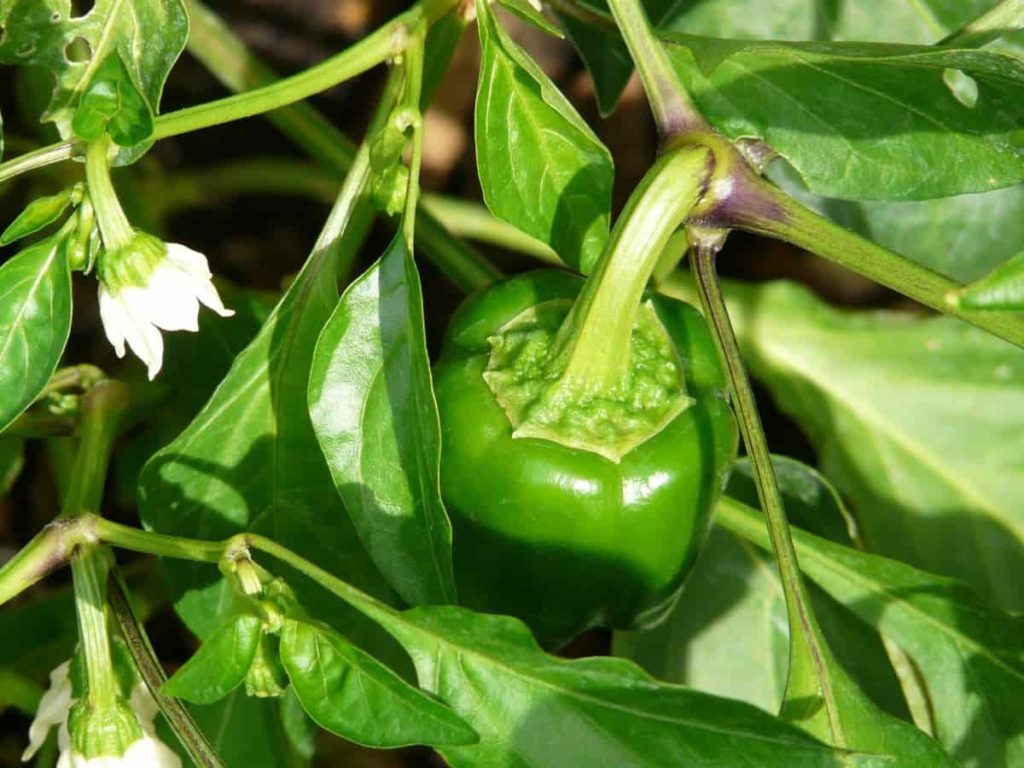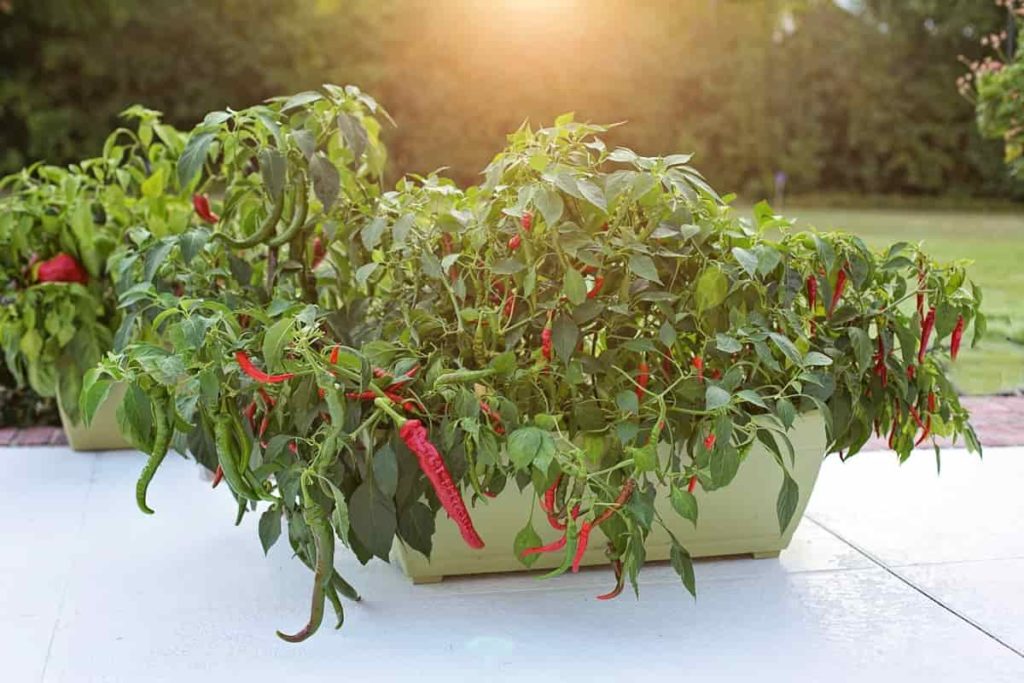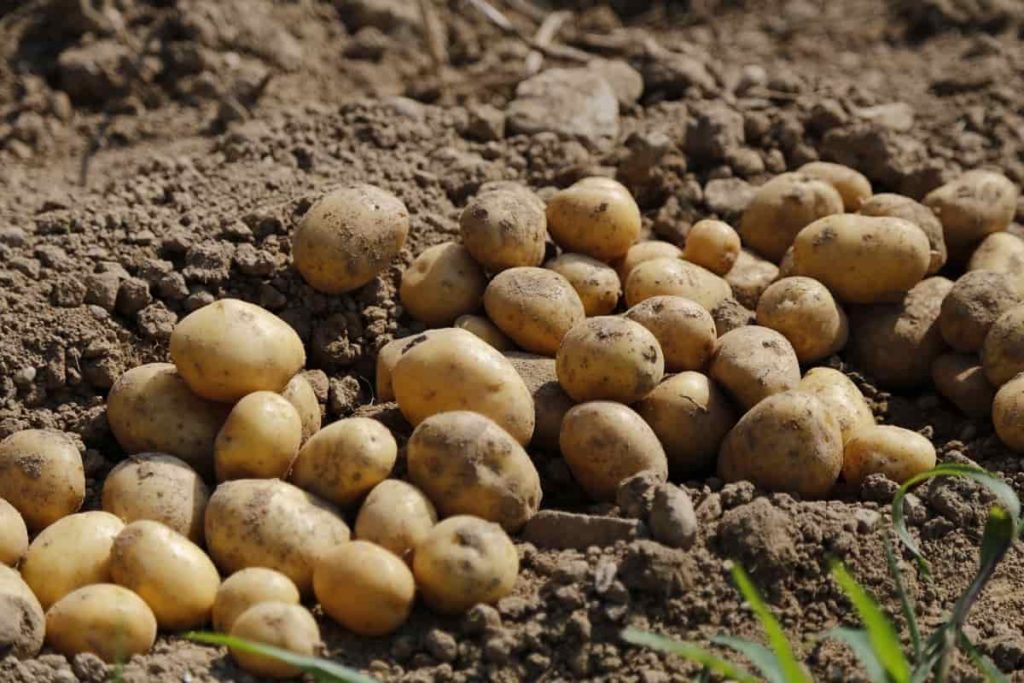Introduction to 20 vegetables to plant in winter in India: Winter in India is one of the best times to garden. The climate, light, and temperature in many parts of the country are ideal for growing different products, and it is pleasant to work in the garden as well. Winter, indeed, can be the season to grow things. Its basket is filled with the most beautiful flowers, the best vegetables, and the most beautiful fruits.
If you are a beginner gardener and don’t live in the mountains, winter is the best season if you’re just getting started. Also, during this season, you can start your garden with seeds and grow everything you need for your ornamental and food gardens. This blog aims to lay out the great variety of vegetables and flowers available during the winter months. But first, we must learn the basics of gardening from seeds.
Guide on 20 vegetables to plant in winter in India, essentials for planting vegetables, tips to prepare the vegetable garden

Essentials for planting vegetables in winter in India
It is essential to understand that fruiting plants require lighter water and nutrients than regular ornamental or flowering plants. We covet these natural elements because they are transformed into products we love. As a result, the more fertile the soil and natural sunlight are, the better the product will be. Nutrients and fertilizer also increase this probability.
Soil
Root rot can be prevented by soil rich in organic matter but not too wet. Topsoil (approx. 55-60%), organic matter (30%), and soilless growing mixes like coco peat or vermiculite (10%) should be used. If you are unsure about preparing soil mixes or finding reliable components, you can use ready-to-use mixes, such as organic veggie mixes. You will need plenty of drainage for excess water when you use containers or soil beds.
After the saplings have been transplanted to the bed according to their recommended time frame, they should be spaced adequately, keeping in mind their total height at maturity and planted according to their light requirements. Climbing plants like cucumbers, beans, and tomatoes require appropriate support structures. It is imperative to protect newly planted saplings from direct rain, so they don’t get washed away.
Water
It is also crucial for the proper growth of plants and fruiting that they are adequately watered. The roots will rot if there is too much water, and they will wither if there is not enough water. According to simple science, watering must be done in proportion to the size and amount of light the plant receives. Due to higher evaporation and faster photosynthesis, the more light you get, the more water you need. Keep your plants constantly watered in a shower form with a garden hose or watering can. Streams of water loosen the roots of plants and damage the soil bed.
Fertilizer
Fertilizing plants is essential for fruiting plants in particular. It is better to use organic fertilizers to produce better, healthier produce. Ensure the organic fertilizer is of high quality and from a reliable supplier. It is just as essential to fertilize at the right time and at the right frequency. It is necessary to fertilize the plant when it is planted, when it starts flowering and when it yields fruit. There may be a different amount of fertilizer needed for different plants. Some fruiting plants with a single male or female flowers if bees and butterflies cannot help. A fun Sunday activity for kids can be as simple as using cotton swabs or earbuds to transfer pollen from one flower to another.
Vegetables to plant in winter in India
Capsicum
There are many varieties of Capsicum, also known as Simla Mirch, locally. India consumes a lot of Simla Mirch, but Bell Pepper is a colored variety of Capsicum. After they are sown in seed trays and planted on raised beds for around four weeks, it is best to cultivate capsicums under green shade, but they require plenty of sunlight. In addition, the plants are susceptible to diseases. Capsicums can be harvested from 70 to 80 days after sowing.
In case if you miss this: Unique Indoor Hanging Plants, Gardening Guide

Swiss Chard
Growing it is easy, and it can be harvested continuously for months at a time. The plant is grown mainly for its stalks and greens, and it can quickly be grown in pots.
Cauliflower
Among the cabbage family, cauliflower is one of the most popular vegetables. A seed is first sown in a bed or tray under constant shade. Approximately 30 to 35 days after transplanting, seedlings are transplanted to raised beds. Cauliflower plants need a chilly climate and plenty of sunlight to grow large heads.
A cauliflower curd appears after 80 to 90 days of transplantation. In unfavorable conditions, cauliflower may have problems such as early flowering or no curd or buttoning (small heads that we can’t eat). Therefore, it is essential to have high-quality seeds, an excellent growing season, and a relaxed and moist atmosphere around the vegetable.
Spinach
Due to its nutritional value, spinach is a popular leafy vegetable. The vegetable is also readily available. Spinach grows well in a cool climate, and it can be grown in full sun or partial shade. Growing it in raised beds is recommended. Spinach is harvested after 30 days. The amount of seeds needed per 100 square feet is three grams.
Onion
As the plants grow and start producing onion bulbs below ground, onion is a top crop in India during the winter, but it needs warm, dry conditions. Therefore, seeds are sown in seedbeds in the chilly season, and seedlings over a month old are transplanted into raised beds. Plants need full sun and regular watering. Depending on the type of onion you choose to plant, you can begin harvesting it 80 to 100 days after transplanting.
Peppers
The taste of homegrown peppers is unmatched, plus growing peppers in pots is fun and rewarding. Make sure the pots are placed in a sunny spot and regularly watered.
In case if you miss this: Top 30 Quick Growing Fruits In Containers/Pots

Carrot
Root vegetables such as carrots are among the most widely consumed. Carrots are readily available in various colors, textures, shapes, and lengths. Depending on the variety, it takes 80 to 100 days for carrot roots to grow edible roots. First, approximately one-and-a-half times the carrot length needs to be loosened in the soil. Then, the soil needs to be broken up fine to allow the roots to grow freely.
Green Peas
Beans are in the same family as green peas. Plants enjoy cold & dry climates and don’t thrive well in hot, humid conditions. The seeds would be easier to plant if you used raised beds. Green peas are climbers and require trellising to grow. It is possible to harvest the pods 80 to 90 days before sowing. Phosphorus and calcium are necessary for peas. Start with 50gms of seeds per 100 square feet.
Tomato
Tomatoes grown at home are delicious and highly nutritious. Winter is the perfect time to sow seeds for these juicy vegetables in your garden.
Lettuce
A leafy vegetable like this will make a great addition to your winter garden. Crunchy greens pair well with everything from burgers to salads. Furthermore, lettuce is a good source of iron, folate, and vitamin C. It can be harvested within a few weeks after planting. Containers and gardens both do well with this vegetable.
Radish
Radishes are another winter favorite that most households enjoy during these cold months. It doesn’t matter if it is a delicious vegetable made from its leaves; the radish doesn’t waste. In addition, as an excellent source of vitamins A, B6, C, D, and minerals such as iron, sodium, potassium, magnesium, and calcium, radish helps improve digestion, immunity and fortify blood vessels by increasing oxygen supply.
Mustard Greens
Another leafy green in the vegetable kingdom is grown mainly for its seeds rather than its leaves. You can detoxify your body from radical damage with mustard leaves, which contain impressive amounts of antioxidants. In addition to lowering your cholesterol levels, the mustard plant’s fibrous leaves improve digestion. As if that were not enough reason to grow these tasty vegetables in your garden, consider their ability to prevent arthritis, osteoporosis, asthma, and other lung diseases.
Garlic
The garlic you grow yourself tastes much better than the garlic you buy at the grocery store. Taking 8-9 months for these veggies to mature is their only drawback, but their fresh flavor is worth waiting.
Brussels Sprouts
The Brussels sprouts family is the cruciferous vegetable group, just like kale. During the cold-weather months, Brussels sprout plants produce small heads that resemble cabbages. They can withstand freezing temperatures in winter, making them an essential ingredient. Despite their minor nutritional content, Brussels sprouts have impressive vitamins and minerals.
Compared to other vegetables, Brussels sprouts are high in vitamin K. A cup (156 grams) of cooked Brussels sprouts contains 137% of your daily vitamin K requirements. Vitamin K is necessary for bones, the heart, and the brain. Manganese and potassium are also found in Brussels sprouts and vitamins A, B, and C.
Potato
A great way to go organic is to replace commercial potatoes with homegrown ones. With these versatile vegetables, you can enjoy a fresh harvest at home by planting them in pots quickly.
In case if you miss this: Top 20 Flowers To Grow In Hydroponics

Arugula
Pots are brimming with spicy green vegetables. You will find these green vegetables growing all over your garden once you sow some seeds in the pot. It is best to serve them on homemade pizza rather than in salads.
Kale
The health benefits of this leafy green are numerous, and it thrives in cooler weather. Cold-tolerant plants like Brussels sprouts, cabbage, and turnips are part of the cruciferous vegetable family. Kale can be harvested year-round, but it prefers cooler weather and even survives snowy conditions. Kale is a nutritionally dense and versatile green as well. The plant is rich in vitamins, minerals, fiber, antioxidants, and potent plant compounds.
Parsnips
Similar to carrots in appearance, parsnips offer a variety of health benefits. As the temperature drops, parsnips become even sweeter, making them a delicious addition to winter meals. In addition, their earthy flavor and nutritional value make them an excellent addition to winter meals.
About 6 grams of fiber and 34% of the daily recommended vitamin C intake are present in one cup of cooked parsnips (156 grams). The parsnips are also excellent potassium, magnesium, and manganese source. The high fiber content of parsnips makes them an excellent choice for digestive health. They are exceptionally high in soluble fiber, forming a gel-like substance in the digestive system.
Turnips
The leaves and roots of turnips are very tender, making them highly healthy. Easy to grow in containers and thrives in a sunny spot with little care.
Parsley
Many herbs die off when the weather turns chilly, but parsley can withstand even the coldest temperatures. Besides being cold-resistant, this green is also packed with nutrients. Over half of the daily recommended vitamin C intake can be found in just one ounce (28 grams). Additionally, it is loaded with vitamin A, folate, iron, calcium, and potassium.
In case if you miss this: Top 18 Flowers to Grow on the Terrace

The flavonoids in parsley, including apigenin and luteolin, can provide several health benefits. For example, these flavonoids may facilitate inhibition of memory loss and aging-related changes in the brain. A luteolin-rich diet decreased inflammatory compounds in the brains of aged mice and improved their memory by inhibiting the production of inflammatory compounds.
Tips to prepare the vegetable garden for winter in India
Clean the vegetable garden beds
It seems overwhelming to start with the vegetable garden because it is such a mess by the end of the season. As you clean up and tuck in the garden for the winter, divide the tasks over time and work through each bed or area.
Removing all dead vegetation
Foliage and fruit left in the garden can become infected with diseases like Late Blight and pests. Make sure to remove any dead plants and rotten fruits and vegetables. Healthy vegetation can also be used in your compost pile. Most compost piles do not reach a temperature high enough to kill disease or fungi. Whenever possible, please dispose of the foliage of your plants with the household trash or burn it to prevent the spread of mildew, mold, and blight.
Adding finished compost and mulch
Several inches of finished compost is added to the mulch, weeds pulled, and mulch. You can lightly cover the beds with the old mulch to protect the soil and suppress weeds. When the ground freezes in winter, many diseases and pests are killed. However, too much mulch may prevent the soil from completely freezing. Add another layer of mulch to perennial herbs and flowers once the ground freezes.
Set up a cold frame
You can use cold frames to protect your plants from cold nights and help them warm up during the day. Cold frames are bottomless pots with a clear plastic or glass cover that you can place over your plants. The transparent cover allows sunlight into the enclosure, which creates a mini-greenhouse, while during the night or on below-freezing days, the cover will retain heat and keep the cold out. It is easy to make a cold frame from recycled wood, old windows, or strong plastic. Cold frames can be sized to fit raised beds and stored during warmer months, and they are ideal.
Commonly asked questions about Vegetables to plant in winter in India
1. Is it possible to grow tomatoes in India during the winter?
Warm- and cool-temperate zones prefer summer to winter production; sub-tropical/tropical zones prefer autumn and winter, as pest/disease issues are more prominent in summer. The soil needs to be moist, well-drained and enriched with plenty of organic matter.
2. What is the best time to plant winter vegetables in India?
Plants will not grow as they do in the summer months once cold, dark days set in. Therefore, winter vegetables need a strong start before the winter season begins. Planting a winter vegetable garden in Zones 7 to 10 should be done in October.
3. What vegetables grow fast in winter in India?
- Onion
- Green Peas
- Cauliflower
- Carrot
- Spinach
- Capsicum
In case if you miss this: Top 15 Herbs to Grow on the Terrace

4. Is it possible to grow vegetables in India during the winter?
It is necessary to shade seedbeds and seedling trays before seeding begins. Several weeks after sowing, healthy seedlings are transplanted onto raised beds. Plants require a cool climate and full sunlight to form big cauliflower heads. The cauliflower curd should be ready to harvest 85-90 days after transplantation.
5. What is the best way to prepare the soil for winter vegetables in India?
- Remove diseased plants. Leave the others alone
- During the growing season, you may have noticed an increase in invasive weeds
- Prepare the soil for spring
- Establish cover crops
- Pruning perennials should be done with care
- Dividing and planting bulbs
- Recycle your compost after harvesting
- Replace mulch
- How to Grow Tomatoes Organically at Home: A Comprehensive Guide
- Organic Gardening on a Budget: Low-Cost Methods and Materials
- Gongura Seed Germination and Planting Methods
- Cabbage Seed Germination and Selection
- Broccoli Seed Germination and Selection
- Asparagus Seed Germination and Variety Selection
- Seasonal Flower Gardening: Best Practices for Spring, Summer, Fall, and Winter
- How to Grow Hibiscus from Flower
- Plantation Ideas for Home Decoration: A Beginners Guide
- Flower Garden Designs and Layouts for Beginners
- Planting and Spacing Techniques in Papaya: A Beginner’s Guide
- Growing Gold: Essential Techniques for Planting Pineapples
- How to Make Kalanchoe Plant Bushy: Home Remedies and Solutions
- 11 Reasons Why Your Gardenia is Not Blooming: Home Remedies and Solutions
- Eco Elegance: The Guide to Designing a Drought-Tolerant Landscape
- Gardening on a Slope: Strategies for Hillside Landscaping
- Nourish and Flourish: Top Organic Mulches for Thriving House Plants
- Everything You Want to Know about Indian Mogra Flower: Discover Uses and Growing
- Green Thumb Success: Expert Tips for Cultivating Greenhouse Pumpkins All Year Round
- Maximize Growth & Flavor: The Ultimate Guide to Companion Planting in Herb Gardens
- How to Control Rhododendron Problems Naturally: Home Remedies and Organic Ways to Fix Them
- Natural Magic: The Remarkable Benefits of Cinnamon for Plants
- Best Steps to Revive Dying Tulip with Natural and Organic Treatment
- 10 Reasons Why Your Angel Trumpet is Not Blooming: Remedies and Treatment
- How to Fix Periwinkle Leaf and Flower-Related Problems: Natural Remedies and Solutions
- How to Fix Zinnias Leaf and Flower Problems: Discover Natural and Home Remedies
- Organic Steps to Induce Lemon Tree Flowers: A Comprehensive Guide
- Bloom Booster: Crafting the Perfect Homemade Bougainvillea Fertilizer
- Optimizing Growth: A Guide to Applying NPK Fertilizer for Potted Plants
- 10 Best Homemade Fertilizers for Rubber Plant: DIY Recipes and Application Method
- How to Boost Female Pumpkin Flowers: Effective Steps for More Flowers and High Yields
- Transform Your Indoor Garden: Top Benefits of Pink Salt for Houseplants
- 10 Best Homemade Fertilizers for Peacock Plants (Calathea): Easy DIY Guide
- Unlock Blooms: 9 Reasons Why Your Potted Chrysanthemum is Not Blooming
- 8 Reasons Why Your Potted Hibiscus is Not Blooming: Fix it with Simple Solutions
- Unlock Blooms: 9 Key Reasons Your Potted Frangipani Won’t Flower